Taiwan doesn’t have a lot of railways, but its network has plenty of history. The government-owned entity that last year became the Taiwan Railway Corp (TRC) has been operating trains since 1891. During the 1895-1945 period of Japanese rule, the colonial government made huge investments in rail infrastructure. The northern port city of Keelung was connected to Kaohsiung in the south. New lines appeared in Pingtung, Yilan and the Hualien-Taitung region.
Railway enthusiasts exploring Taiwan will find plenty to amuse themselves. Taipei will soon gain its second rail-themed museum. Elsewhere there’s a number of endearing branch lines and rolling-stock collections, some of which have been featured in this newspaper (see “Gricing in the northwest” in the May 3, 2019 Taipei Times).
Here are three more spots likely to fascinate anyone passionate about trains.

Photo: Steven Crook
HAMASEN RAILWAY CULTURAL PARK
Next to what used to be the Port of Kaohsiung’s cargo-handling docks, in a neighborhood often crowded with tourists going to or from Pier-2 Art Center (駁二藝術特區), there’s a repurposed former marshalling yard called Hamasen Railway Cultural Park (哈瑪星鐵道文化園區).
Hamasen was the name given to this part of Kaohsiung by the Japanese colonizers, and in recent years it’s been revived by local authorities keen to play up the area’s rich history. The railway facilities, built to facilitate commodity exports during the colonial era, were decommissioned in 2008. Since then quite a bit of greenery has been added, and more than two dozen pieces of retired rolling stock have been placed on display. Some of them — notably the CK58 steam locomotive, built in Japan in 1912 — are over a century old.
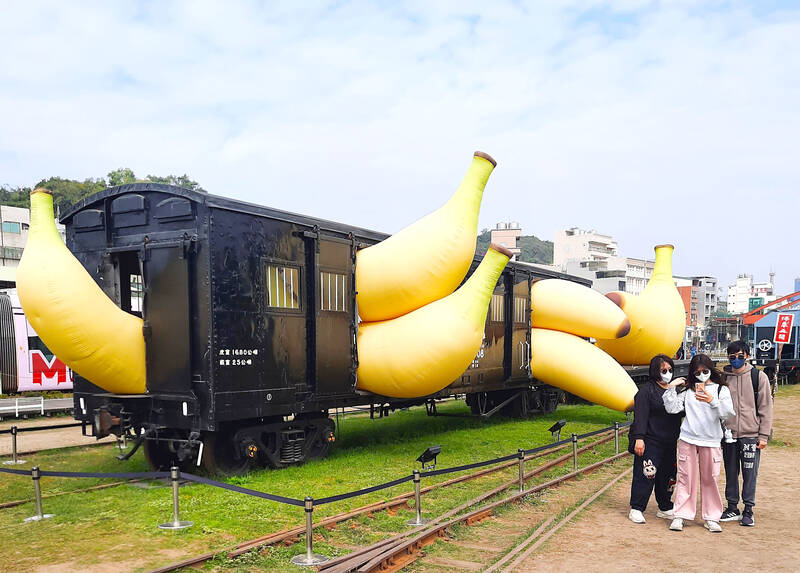
Photo: Steven Crook
During and after the colonial period, trains moved massive amounts of sugar and bananas to the harbor for export to Japan and other markets. After World War II, when Taiwan began to import large quantities of agricultural commodities from the US, flour and soy flowed in the opposite direction.
Two and a half rooms inside the old station building — which as far as I can tell dates from the late 1940s, the previous structure having been flattened by American bombers just before the end of World War II — are now Takao Railway Museum (open 10am to 6pm Tuesday to Sunday; free admission). But apart from the station master’s desk and a locked glass cabinet filled with thick reports and bulletins, there isn’t much to see.
It isn’t the only rail museum in this part of Kaohsiung. To get inside the Hamasen Museum of Taiwan Railway (哈瑪星台灣鐵道館, briefly described in “Tea, trawlers and trains in Takow” in the Feb. 23, 2024 issue of this newspaper), you’ll need to buy a ticket that costs NT$149, unless you’re a senior citizen or a child aged 3 to 12, in which case it’s NT$99.
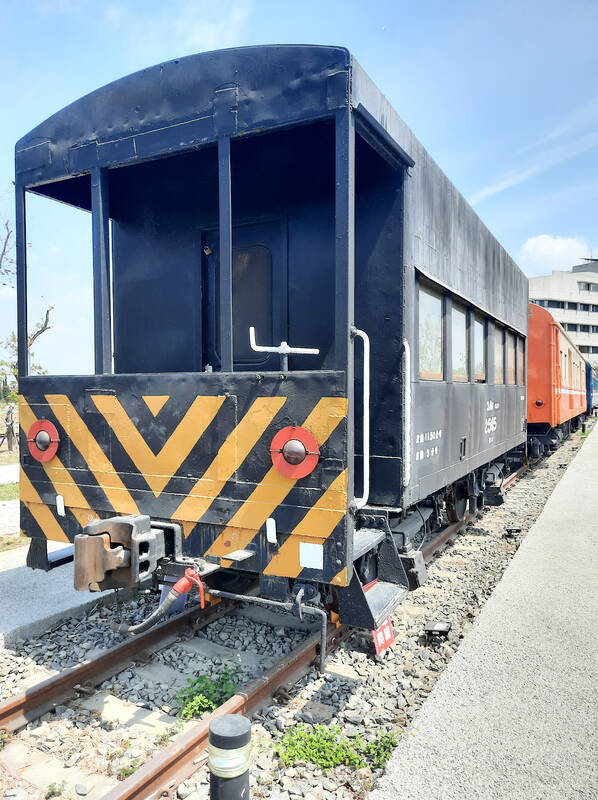
Photo: Steven Crook
Hamasen Railway Cultural Park, which never closes, is a stone’s throw from Hamasen Station on the Kaohsiung Metro’s Orange Line and Hamasen stop on the Circular Light Rail.
CHAOZHOU RAILWAY PARK
A decade ago, ahead of the undergrounding of the railroad through central Kaohsiung, that city’s train depot and maintenance facilities began relocating to the outskirts of Chaozhou (潮州) in Pingtung County. The massive sheds in which trains are assembled and repaired aren’t open to the public, but an adjacent patch of land was designated Chaozhou Railway Park (潮州鐵道園區, www.chaozhourailwaypark.com.tw).
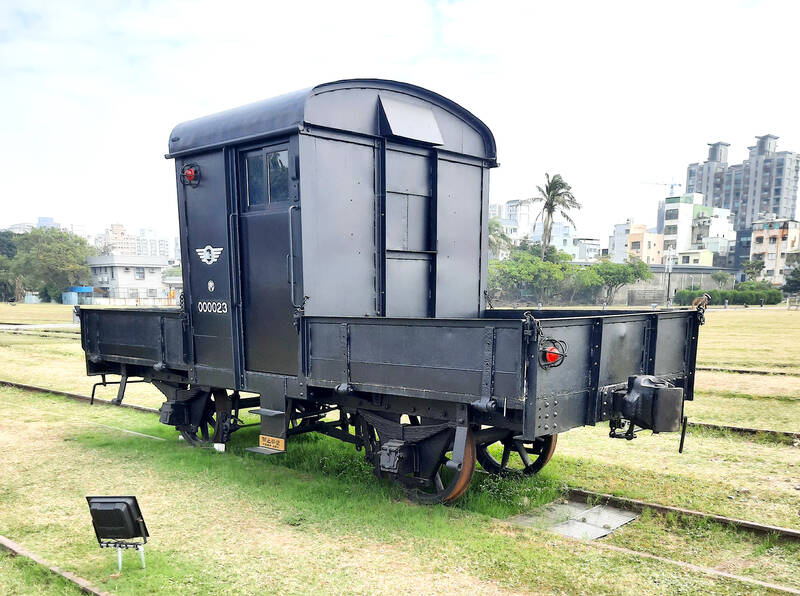
Photo: Steven Crook
The eight-hectare park is likely to keep hardcore train fans busy for at least two hours. If you’re not this type of person, however, you might prefer to use your time to explore Pingtung’s many other attractions. Having been to both places, I’d say that Taipei’s Railway Department Park (鐵道部園區, see “A celebration of railway history in the heart of Taipei” in the Mar. 19, 2021 Taipei Times) has a broader appeal than Chaozhou’s version.
Chaozhou’s indoor exhibition hall includes detailed bilingual panels which explain, among other things, the evolution of freight-car couplers and braking devices. Items preserved here include a station clock and a welding kit.
The park doesn’t have nearly as much rolling stock as Hamasen, yet it boasts the longest freight car ever used in the country, a 21.29-meter-long center-depressed flat car constructed in 1942 to move power-plant turbines and other heavy machines. The information panel in front of a box car, ventilated so it could ship fresh fruits and vegetables without them spoiling, reveals that it was made redundant by refrigerated trucks. The cutest vehicle is a diesel switcher, used from the 1960s onward to shunt freight cars short distances.
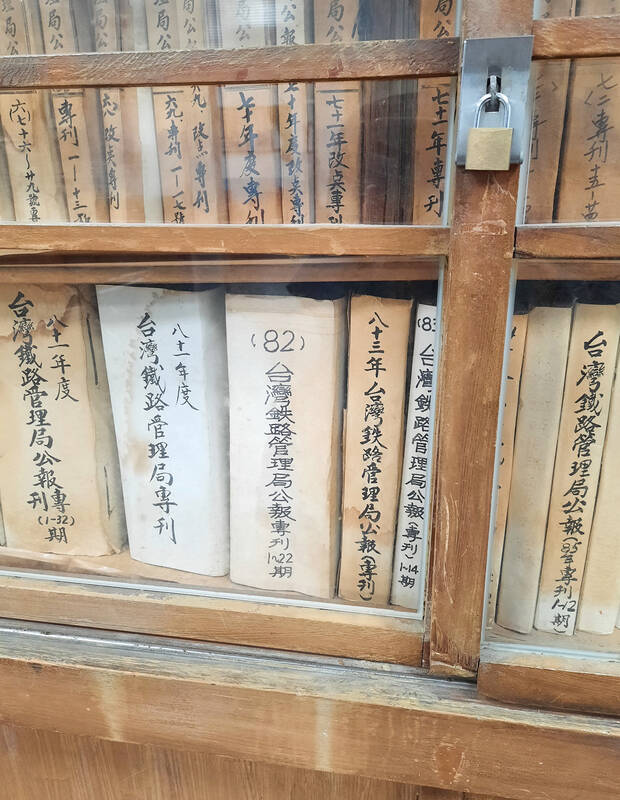
Photo: Steven Crook
Walking to the railway park from Chaozhou TR Station will take you the better part of an hour. Catching bus #607 (seven services per day) from just outside the train station is one option. Riding a YouBike is another; there’s a rental point just outside the railway park’s entrance.
TAITUNG’S REDUNDANT TURNTABLE
Before the South-Link Line connected Pingtung to Taiwan’s southeast, Taitung was the eastern corridor’s terminus. So railroad vehicles could be pointed in the right direction for the return journey toward Hualien, the authorities built a turntable similar to the still-functioning apparatus that delights rail enthusiasts who visit Changhua Roundhouse (see “Turning back time at the Changhua Roundhouse” in the Feb. 17, 2023 Taipei Times).
Taitung’s turntable hasn’t been used in a long time, but it remains in situ, ignored by most of the tourists wandering around the Railway Art Village (鐵道藝術村), site of the city’s principal train station from 1922 to 2001. The turntable is a short walk southwest from the old platforms and decommissioned passenger cars.
Satellite images indicate that the station also had a U-turn triangle, which arriving locomotives could back into then drive forward out of. I’ve not been able to find out if this feature predates the turntable or superseded it. Perhaps they were both used at the same time.
There’s no fence, so the old turntable can be visited at any time. If you’re driving or riding, park on Tiehua Road (鐵花路) or Zhonghua Road Section 1 (中華路一段). Buses terminating at Taitung Bus Station will get you within 100m of the turntable.
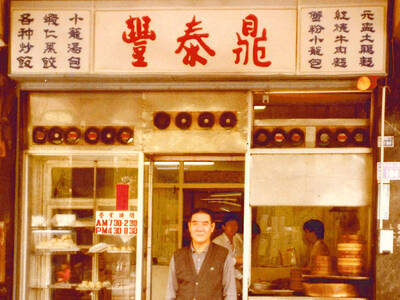
March 24 to March 30 When Yang Bing-yi (楊秉彝) needed a name for his new cooking oil shop in 1958, he first thought of honoring his previous employer, Heng Tai Fung (恆泰豐). The owner, Wang Yi-fu (王伊夫), had taken care of him over the previous 10 years, shortly after the native of Shanxi Province arrived in Taiwan in 1948 as a penniless 21 year old. His oil supplier was called Din Mei (鼎美), so he simply combined the names. Over the next decade, Yang and his wife Lai Pen-mei (賴盆妹) built up a booming business delivering oil to shops and

Indigenous Truku doctor Yuci (Bokeh Kosang), who resents his father for forcing him to learn their traditional way of life, clashes head to head in this film with his younger brother Siring (Umin Boya), who just wants to live off the land like his ancestors did. Hunter Brothers (獵人兄弟) opens with Yuci as the man of the hour as the village celebrates him getting into medical school, but then his father (Nolay Piho) wakes the brothers up in the middle of the night to go hunting. Siring is eager, but Yuci isn’t. Their mother (Ibix Buyang) begs her husband to let
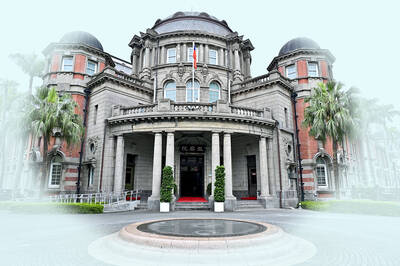
The Taipei Times last week reported that the Control Yuan said it had been “left with no choice” but to ask the Constitutional Court to rule on the constitutionality of the central government budget, which left it without a budget. Lost in the outrage over the cuts to defense and to the Constitutional Court were the cuts to the Control Yuan, whose operating budget was slashed by 96 percent. It is unable even to pay its utility bills, and in the press conference it convened on the issue, said that its department directors were paying out of pocket for gasoline
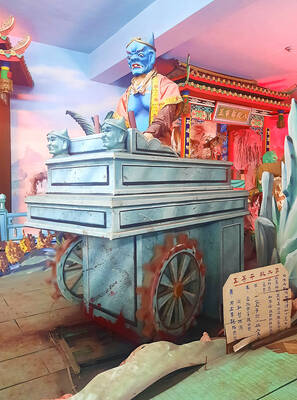
For the past century, Changhua has existed in Taichung’s shadow. These days, Changhua City has a population of 223,000, compared to well over two million for the urban core of Taichung. For most of the 1684-1895 period, when Taiwan belonged to the Qing Empire, the position was reversed. Changhua County covered much of what’s now Taichung and even part of modern-day Miaoli County. This prominence is why the county seat has one of Taiwan’s most impressive Confucius temples (founded in 1726) and appeals strongly to history enthusiasts. This article looks at a trio of shrines in Changhua City that few sightseers visit.